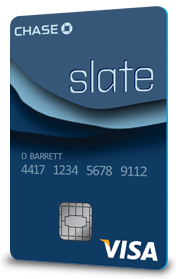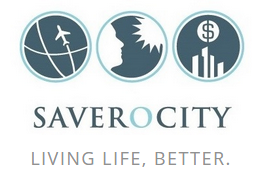I’m in the midst of my latest credit card churn. Its slightly more than pedestrian, but perhaps not as crazy as some others (re: Frequent Miler) have done in the past. But I don’t think the number of cards is as important as the methodology.
Whenever I apply for credit cards, I think to myself what the risks are and opportunity cost is.
Risks:
- You always run the risk that the credit card issuer/bank denies you. This could result in a hard pull but no points (the madness!)
- Worse, the credit card issuer might think you’re no longer a good customer, it could, in fact, sour the well, so to speak.
- Even worse, if they think you’re too high risk, or if American Express conducts a Financial Review on you.
There’s also the other side of it, what are you giving up by selecting a particular credit card? With reasonable knowledge (Post via Doctor of Credit) of what cards can be churned and how many cards can be applied at one time, you can weigh the opportunity costs of your decision.
Opportunity Cost:
- Does the card meet your near term goals?
- Does the card have a limitation–like Citi’s Platinum card–where you are limited to one bonus in 18 months? or worse, a life time? What if the card has a better bonus in the future?
- Does the bank/credit card issuer limit how many cards you can have, a la AMEX?
- What is the “value” of the bonus to you, compared to another card?
So as I prepared my latest churn (yes, I still believe in batching my applications whenever possible). I looked at the opportunity cost of the Chase Slate card and its 0% balance transfer fee, and 0% for 15 months, versus other Chase options.
Why would I need a balance transfer card, when, as everyone will say, to play this game, you need to be as debt free as possible? Well, I still have some college loans I’m trying to pay off, and I can save a bunch of interest by transferring them to a credit card like the Slate, then using the monthly payment I would otherwise be sending to the loan company, to the credit card, and augmenting that payment as necessary. It saves me some interest, and gets more debt off the books.
You might ask (as I did): How much can I save by using the Chase Slate? If you look at the terms, you can do a balance transfer up to $15,000, assuming your approved for slightly more than that. If the balance transfer is done in the first 60 days, there’s no balance transfer fee. After 60 days, you’d be hit by a 3% balance transfer fee. So, you’re saving ~$450 in that fee alone, right? Not so fast. If you’re like me, you get promotional APR / Balance Transfer / Credit Card Checks (truth be told, I’m not sure what they’re really called), and, if you’re like me, you take note of the various offers. Well, one that I typically see multiple times a year, is from my British Airways card (also a Chase credit card), that offer is typically 12 months 0% promotional APR on Balance Transfers, with a 2% fee.
So now, the “value” of the Chase Slate is closer to $300, rather than that initial $450. UPDATE: My friend FreequentFlyer also reminded me that you can convert the Chase Slate into the Chase Freedom after enjoying the balance transfer / 0% interest, making the card even more attractive in the long term–since you can eventually turn it into a points earning card!
What I’m really getting at is this: The benefit of the game that we play with miles and points, and really leveraging credit, is that you can extend it to other aspects of your life to save money, and otherwise better your quality of life. That’s probably why Matt chose the tagline as:
Have you leveraged mile and point knowledge for bettering other parts of your life? if so, please share your story in the comments!


I would argue the Citi Simplicity card is better, 0% for 18 months and you get access to the Citi Easy deals, I’m sold on the Citi Easy deals from Big Habitat
@ChasingthePoints – The only reason the Citi Simplicity card loses is the 3% balance transfer fee on that 0% for 18 months. It would “cost” $450 to transfer a full $15k… would citi extras offset that much?
What is the equation to find the amount of interest dollars saved by removing principal from the loan in the way you suggest?
(Outstanding Balance * Annual Interest Rate) / 12 = Monthly Interest Charge
Take your monthly payment, and subtract the interest above to understand your principal paydown. Your loan statement each month should also show how much of your payment goes to Principal, versus what goes to Interest.
Then, use the formula that Trevor demonstrated (Balance Xfer Amt * Fee) = “New” Interest Payment for the *entire 12 or 18 months”.
Net the two out .. 12 or 18 months of interest without the credit card xfer, minus 12 or 18 month balance xfer fee = net savings.
Also keep in mind, however, that this will likely show your credit card as maxed out (above 30% utilization) and your credit could take a hit. Lastly, if you are unable to make a payment, you’re really out of luck. Many student loan providers (although mostly federal now) will allow a temporary hardship forbearance, while credit cards obviously have no such program if you lose your job, etc.
Good luck!
I’d suggest the savings is based on the rate of debt you are paying off. So, if it was a student loan at 6.8%, it would be ballpark 1,020 for 12 months or 1,275 for 15 months or 1,530 for 18 months. A bit less actually since the minimum payments would amortize the balance down a bit. Perhaps quite a bit less if your loan is deductible (depends on income limits for student loans).
That said, if it nearly redlines your utilization on that card it might have an impact on your ability to get other sign on bonuses if your score takes too big a hit. I know lenders look at total utilization as well as per card.
The other option is with MS the balance transfer fee’s are immaterial since you can easily build up a balance with purchases that shouldn’t carry much more than a 1% charge. If you can find a card with good rewards you should be able to pick up some rewards building a balance that you then defer interest on. Amex Blue Preferred had something like 12-15 months of 0% interest when I got it once upon a time.
@Sesq – You make valid points on identifying the savings based on the interest savings. I was attempting to identify the opportunity cost, that is, not necessarily if I was going to do it (I knew I was going to), but what the best value for doing it would be.
Now your second point on utilization – that is a concern, so I’ll monitor my credit closely. We did a similar strategy with my wife a year ago, and didn’t notice an appreciable drop though.
That third option – MSing, that I like. That would open up other options, like maybe the Citi Double Cash (although I’d only realize 1%). I can’t think of many points earning cards that have an introductory 0% interest promotion though. But I really like your thinking, outside of the box. That strategy is what I figured I’d end up having to do for a different plan I have — that is, leveraging OBC for cash back, then using that savings to pay down the balance… I figured I’d need to just eat ~0.75% to liquidate, put it to the balance and, burn the cash back against the OBC balance.
Chase Freedom is 0% APR for 15 months.
R – so that’s a pretty good option for Sesq’s third option given that it is point generating… (especially with 5x up to $1500)! Thanks for sharing!
I’m glad you posted this, because I’ve put some thought into this strategy before. Although, my plan was to go the VGC route and then BP with Serve. Can you actually do a balance transfer from a Sallie Mae/Navient loan to a credit card?
@Jonathan – That’s a great question! The balance transfer checks that credit card issuers send out (in some cases, multiple times a month – ugh!) can be written to anyone, so far as I can tell. Back when high yield savings accounts actually yielded high interest, folks would write checks out to themselves, deposit it in said high yield savings accounts, and bank on the interest for the 15 month 0% interest period. Of course they’d also partner that with CDs to increase the interest even more.
One thing to remember is that the student loan interest can be taken as a tax deduction (depending on your tax situation) so when calculating our your gain on this, remember to account for the loss of this tax benefit if applicable
@Spencer – you make a great point. Although doing my taxes at the moment, I don’t see a huge gain. Second – I’m more of the opinion of comparing the opportunity cost, vs. the amount saved. Yes, the amount saved is material gain, but, I guess I don’t like to count my chickens before they are hatched, so to speak.
I applied for the Slate and transferred the balance from 5 percent cards. It is like negative interest on a loan. The big downside was a low credit limit. It was less than half of what most cards generally have given. Don’t count on a full 15k.
@Scott you make a good point on the credit limit – luckily, Chase allows the re-allocation without any hard pulls, and I have a healthy overall credit limit with Chase. Awesome that you were able to save so much!